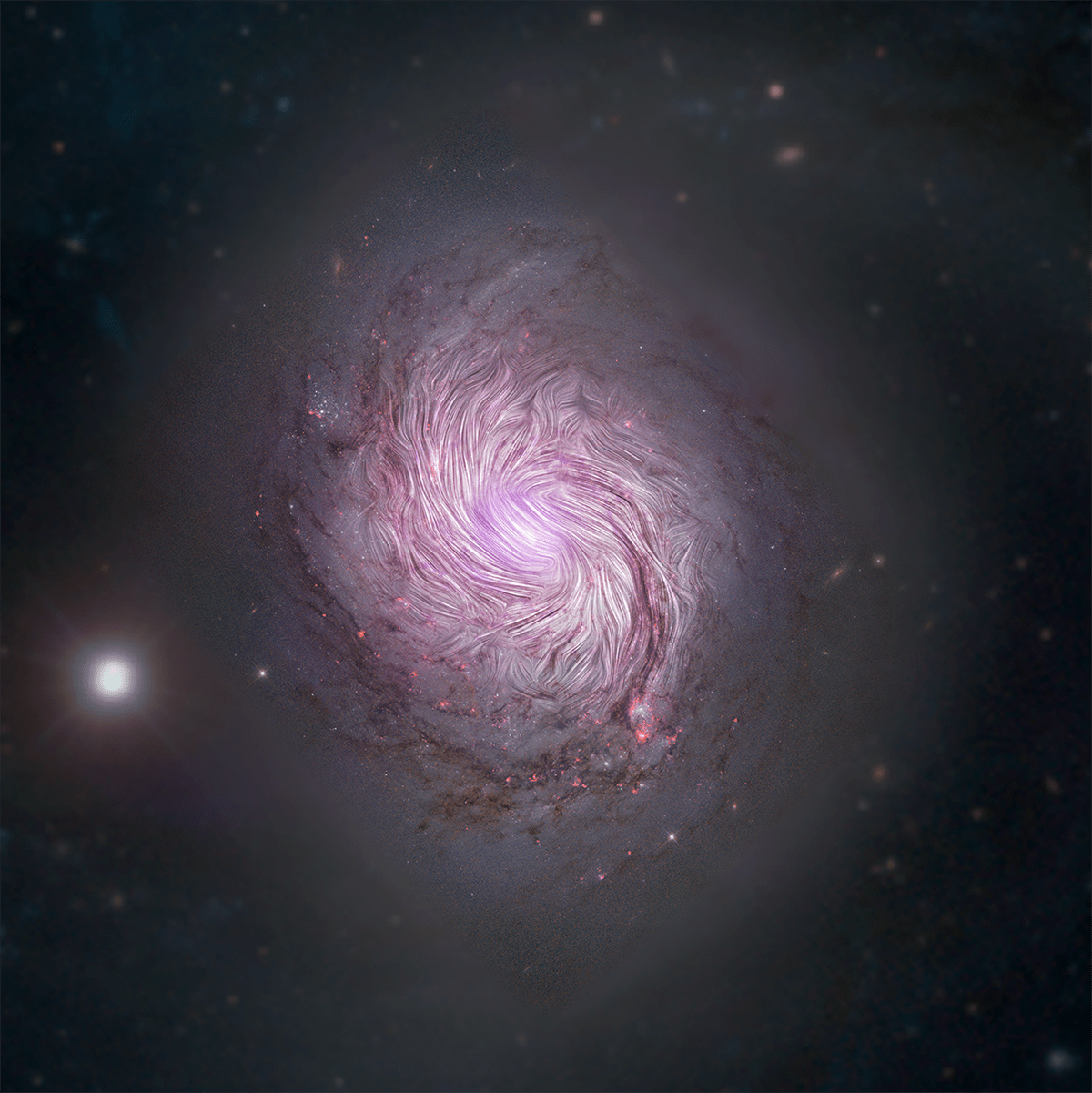Spiral galaxies are an iconic form. They’re used in product logos and all sorts of other places. We even live in one. And though it may seem kind of obvious how they get their shape, by rotating, that’s not the case.
Scientists are still puzzled by spiral galaxies, and how they gain their form, with elegant arms full of stars. Astronomers working with SOFIA, the Stratospheric Observatory for Infrared Astronomy, are studying what role magnetic fields play by observing spiral galaxies other than our own. Recently, SOFIA scientists observed the M77 galaxy, also known as NGC 1068, and presented their results in a new study.
The new study is titled “SOFIA/HAWC+ traces the magnetic fields in NGC 1068” and will be published in the Astrophysical Journal. The lead author is Enrique Lopez-Rodriguez, a Universities Space Research Association scientist at the SOFIA Science Center at NASA’s Ames Research Center.
“Magnetic fields are invisible, but they may influence the evolution of a galaxy,” said Lopez-Rodriguez in a press release. “We have a pretty good understanding of how gravity affects galactic structures, but we’re just starting to learn the role magnetic fields play.”
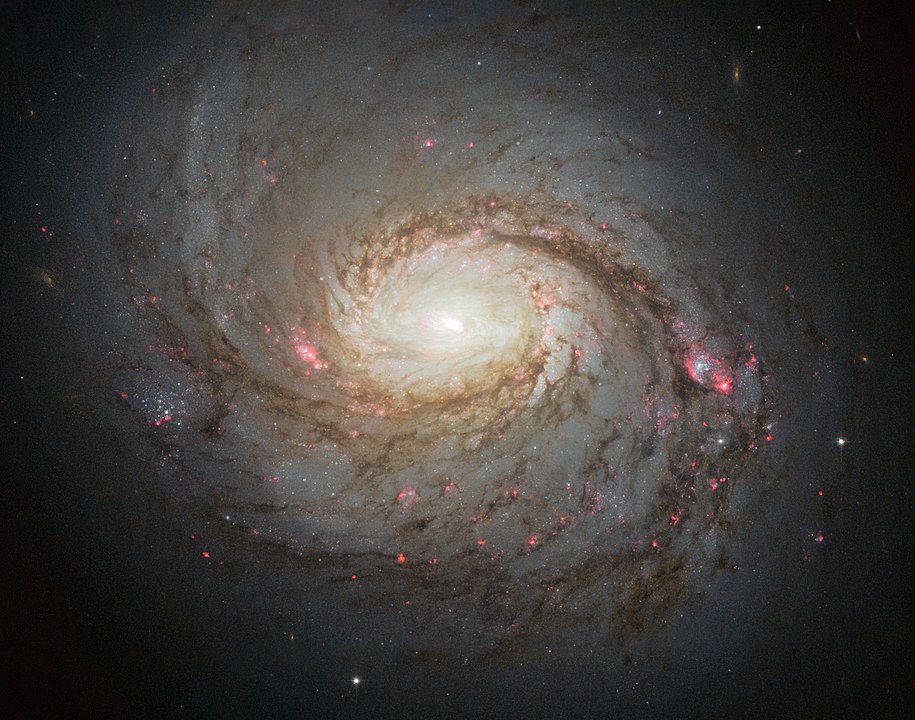
M77 is a spiral galaxy about 47 million light years away. It’s a barred spiral galaxy, even though the bar can’t be seen in visible light. It has an active galactic nucleus, also not seen in visible light, and it hosts a supermassive black hole (SMBH) that’s twice as massive as Sgr A*, the SMBH at the center of the Milky Way. M77 is larger than the Milky Way: it’s about 85,000 light years in radius, and the Milky Way is about 53,000. M77 has about 300 billion stars, while the Milky Way has between 250 billion and 400 billion.
M 77 is the nearest grand-design spiral galaxy with both a bright active galactic nucleus (AGN) and a luminous circumnuclear starburst.
M 77’s spiral arms are full of areas of intense star formation called starbursts. Invisible magnetic field lines closely follow the spiral arms, though our eyes can’t see them. But SOFIA can, and their existence supports a widely-held theory that explains how these arms get their form. It’s called “density wave theory.”
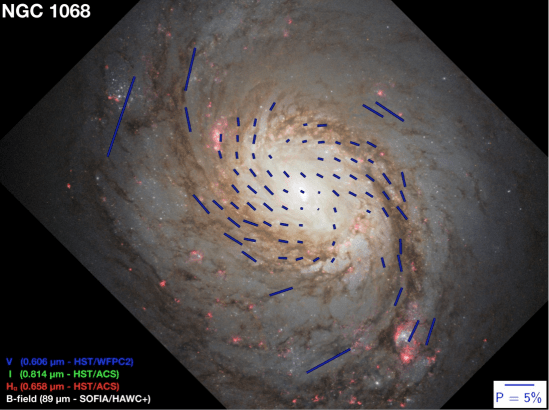
Before the density wave theory was developed in the mid 1960’s, there were problems explaining spiral arms in a galaxy. According to the “winding problem” the spiral arms would disappear after only a few orbits and be indistinguishable from the rest of the galaxy.
Here’s a quick video that shows the winding problem.
Density wave theory says that the arms themselves are separate from the stars and gas and dust that travel through the density waves. The arms are the visible part of the density waves themselves, and the stars move in and out of the waves. So the arms aren’t permanent structures made of stars, even though that’s what it looks like.
Here’s a short video showing how density waves create spiral arms in galaxies.
SOFIA observations show that the magnetic field lines stretch all the way across the arms, a distance of 24,000 light years. According to the study, gravitational forces that helped create the galaxy’s spiral shape are compressing the magnetic fields, which supports the density wave theory.
“This is the first time we’ve seen magnetic fields aligned at such large scales with current star birth in the spiral arms,” said Lopez-Rodriquez. “It’s always exciting to have observational evidence that supports theories.”
Magnetic field lines in galaxies are very difficult to observe, and SOFIA’s newest instrument makes it possible. It’s called HAWC+, or the High-resolution Airborne Wideband Camera-Plus. HAWC+ works in the far-infrared to observe dust grains, which are aligned perpendicularly to the magnetic field lines in M77. That allows astronomers to infer the shape and direction of the underlying magnetic field.
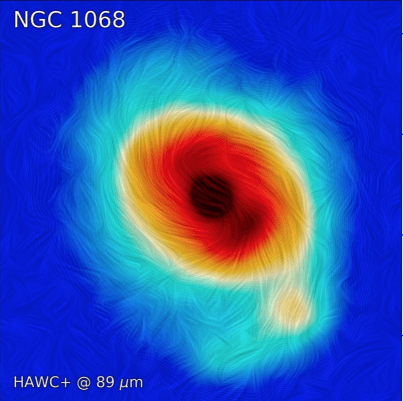
There’s a lot of potential interference in M 77, like scattered visible light and radiation from high-energy particles, but far-infrared is unaffected by them. SOFIA’s ability to see in the 89 micron wavelength allows it to see the dust grains clearly. HAWC+ is also an imaging polarimeter, a device that measures and interprets polarized electromagnetic energy.
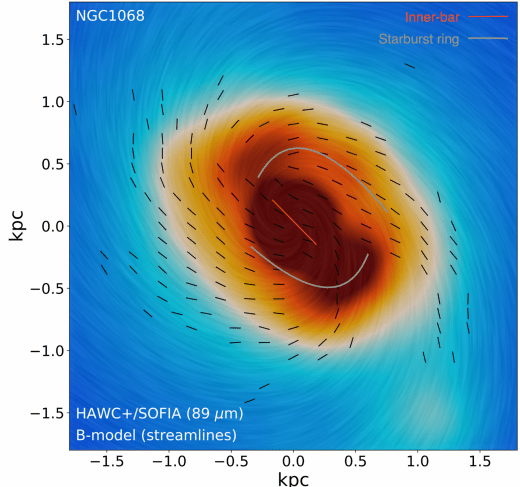
This study deals only with a single spiral arm galaxy, so there’s more work to be done. It’s unclear how magnetic field lines might play a role in the structure of other galaxies, including irregulars. But it looks like this team has developed a method of studying those galaxies.
As they say in the conclusion of their paper, “The results presented here, along with our prior studies of M 82 and NGC 253 (Jones et al. 2019), provide evidence that FIR (Far-Infrared) polarimetry can be a valuable tool for studying magnetic field structure in external galaxies, particularly in regions of high optical depth.”
More:
- Press Release: How to Shape a Spiral Galaxy
- Research Paper: SOFIA/HAWC+ traces the magnetic fields in NGC 1068
- HAWC+
- Universe Today: Messier 77 – the Cetus A Barred Spiral Galaxy

